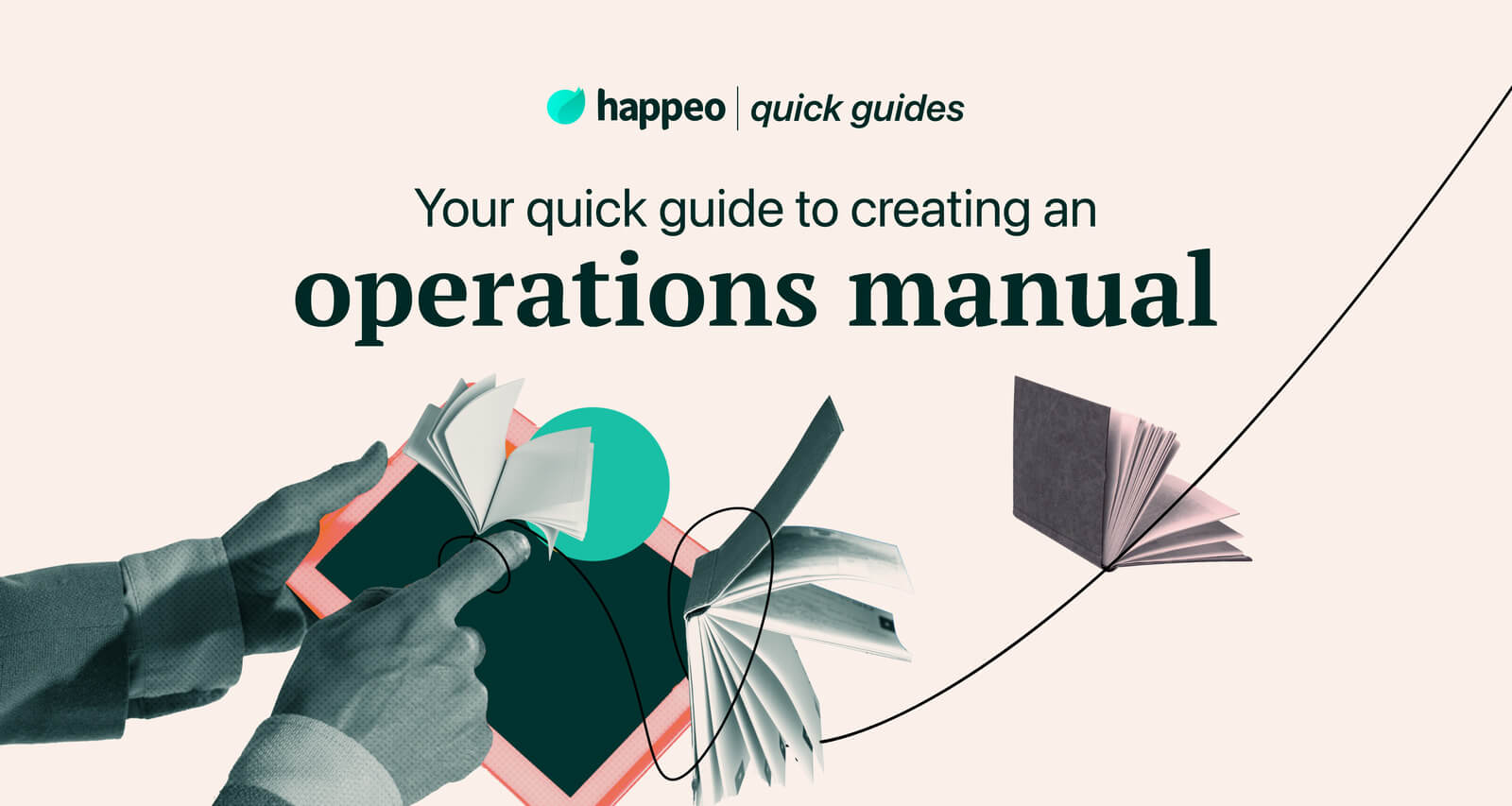
Quick guides Employee engagement
Your quick guide to creating an offboarding plan [incl. template]
![Your quick guide to creating an offboarding plan [incl. template]](https://www.happeo.com/hubfs/Happeo-Website-Assets/New/blog/Blog_94740396838_featured-1.jpg)
9 mins read
Start building your digital home with Happeo
Request a demoQuick guides Employee engagement
Product
Features
Solutions
Happeo for
Use cases
Resources
Explore
Support
Happeo For
Use cases
Comparisons
Explore
Support
Recent

Tiia Tirkkonen
9 mins read
If the employee onboarding process is designed to get a new hire acquainted with your company and settled into their role, the main goal of employee offboarding is to help employees leave your company and make sure that the team can run smoothly once they’re gone.
A successful offboarding procedure has the added benefit of educating your organization on why people are leaving, as well as what employees like and dislike about working there.
Employee offboarding can be defined as the procedure required to transition a departing employee when they leave a company. During this process, the employee and their manager go through a series of measures to ensure that the employee leaves the company amicably, and that the team can function successfully in their absence.
Steps in the offboarding process can include delegating previously handled responsibilities, conducting an exit interview, training a new team member, and fulfilling HR requirements such as returning office equipment.
The offboarding process should also make the departing employee feel valued and respected. This will be their last interaction with your organization, so you’ll want them to leave full of positives. This might encourage them to recommend future employees, or even your company’s products and services.
Here are some things you should include in your employee offboarding process to make it a success:
Employee notice periods differ across the world. They will be outlined in the employment contract, with some as short as one or two weeks, and others up to two months. Longer notice periods usually apply for senior or C-level positions, and shorter notice periods for entry-level jobs. Managing Directors and Senior Managers may also be required to find a replacement during the offboarding process.
In some countries, the notice period is dependent upon how long you have been in employment. In Finland, for instance, there is a notice period of 14 days if the employment has lasted for less than a year; one month if the employment period is between one and four years; two months for four to eight years; and six months if the employment has lasted more than 12 years.
Telling your boss that you’re leaving can be a daunting prospect at first, so it’s a good idea to include some tips on how your employees can communicate their departure:
Set up a one-on-one meeting or call
Before sending an official resignation email, it’s usually common courtesy to arrange a one-on-one meeting or call with your direct manager to notify them and explain why you’re leaving the company.
Be clear about your reasons for leaving
There could be a number of reasons why an employee decides to leave your company, what’s important is that they communicate these reasons honestly and respectfully. That’s because it’s the perfect opportunity to receive some constructive feedback. You might want to list some common reasons why people leave, such as:
Express gratitude and share positives
It’s in nobody’s best interest to burn bridges. You want your employee to speak fondly of your company when they leave, and they will want to leave on good terms, especially if they want a letter of recommendation or referral. That’s why it’s a smart idea to encourage the departing employee to share what they’ve enjoyed about working at your company such as projects they’ve worked on and growth opportunities.
When an employee is leaving your company, your main goal should be making sure that the team can run effectively and smoothly in their absence. This includes supporting the new hire in their new role, shortening the time it takes to train them, and ensuring that the departing employee documents and shares key knowledge with the team. This process is called knowledge transfer.
In this section of your employee offboarding template, you should share tips on how to document processes and hand over work in a timely manner. You’ll want to ask the departing employee to note down the following information as soon as possible:
If training sessions are required for skill sharing and how many are needed
Once the knowledge transfer plan has been created, the next step is making sure the required training and handover is completed in the departing employee’s final weeks at the company. It might be a good idea to list the most common methods that can be used to effectively transfer knowledge within your organization:
Virtual training
Video tutorials are an interactive and time efficient way to train team members and future employees, especially if your team works remotely. That’s why it’s a smart idea to ask the departing employee to record a series of videos explaining and carrying out key tasks. Not only can team members learn at their own pace, the videos will be available long after the departing employee has left, so there’s no need to create new videos.
Work shadowing
Similar to virtual training, work shadowing is an observation-based method where the new team member learns the role and responsibilities by shadowing the departing employee. Work shadowing is mainly done in-person and is useful for training certain positions such as sales teams and office managers.
Besides the knowledge transfer plan, the exit interview is probably one of the most valuable things you can do during the employee offboarding process. An exit interview can take many forms; it can be a face-to-face conversation, a questionnaire, or both.
There are many benefits to arranging an exit interview, the main one being it can help departing employees leave on good terms, and even turn them into company ambassadors. Here are a few things you can discuss in the interview:
Salary, benefits and other HR processes
Even though salary is not usually the main reason for an employee leaving, it’s important to know if they felt fairly compensated for their role. You can also ask for their opinion on the organization’s hiring strategy, promotions within the team, and employee benefits.
The role and responsibilities
Ask the departing employee for an honest assessment of their daily tasks, workload, and collaboration with peers. This section of the exit interview is a good way to identify any issues which could be affecting motivation and efficiency.
Leadership and management
For some organizations, the exit interview may be the only time employees feel comfortable giving feedback on management and leadership styles. You should aim to find out if the management was too hands-on, hands-off, or just right. Micromanagement is a big contributor to employee churn, so this feedback can be extremely valuable.
General improvement points
Every employee will have an opinion on what the organization should and should not be doing, but rarely are these opinions voiced to upper management. Use the exit interview as an opportunity to ask the departing employee for feedback and/or improvement points on company strategy, marketing efforts, competition, and the structure of their department.
Next to the exit interview, an employee offboarding survey is a valuable opportunity to learn more about the employee’s main motivation for leaving—one of the main goals of the employee offboarding process.
Another purpose of the survey is to understand your employee’s experience at your organization. Consider asking the following questions, using the 5 point Likert scale for responses (e.g. strongly disagree; disagree; neither agree nor disagree; agree; strongly agree).
It goes without saying that when an employee leaves your organization, you need to make sure that they return any company property that they have in their possession. In this part of the employee offboarding process, you should list all the items that need to be returned and how to return them.
The most common company property items are:
Departing employees may be eligible for different benefits once their employment contract is over. In some cases, employees are entitled to receive some benefits by law, such as severance payments, holiday allowance, and accrued overtime and sick pay.
If your organization offers a pension and retirement scheme, you should inform the departing employee where to access their pension plan and see how much pension they have accrued. Some organizations will continue to pay the employee’s pension after they’ve left the company, either as a one-off sum or in staggered payments.
After the employment has ended, departing employees may need to get back in touch with your organization for HR-related matters. The reason for this could be anything from accessing pay slips to making sure there are no issues with any benefits or back payments that need to be made. That’s why it’s a good idea to provide the departing employee with the contact details of a few HR staff members or a general HR email address.
Employee review sites can be an extremely valuable resource for recruiting teams trying to attract the right talent to their company. Candidates usually prefer to read honest reviews from employees on sites such as Glassdoor, as they provide an accurate representation of what it’s like to work at a company and what to expect in terms of company culture.
The final few weeks of employment is a convenient time to ask the employee to submit a review on Glassdoor or another employee review site. Make sure the departing employee knows that leaving a review is voluntary and anonymous, but make it clear why their opinion can go a long way.
If your organization organizes alumni meetups and gatherings, make sure you share how company alumni can stay up to date on the latest events—whether that’s via an email list, a website page for alumni events, or even a LinkedIn group.
If you’re interested in exploring how your employee offboarding process could become a pivotal ingredient of your company intranet, try out Happeo's employee offboarding process template.
